2018年最佳设计企业排行榜
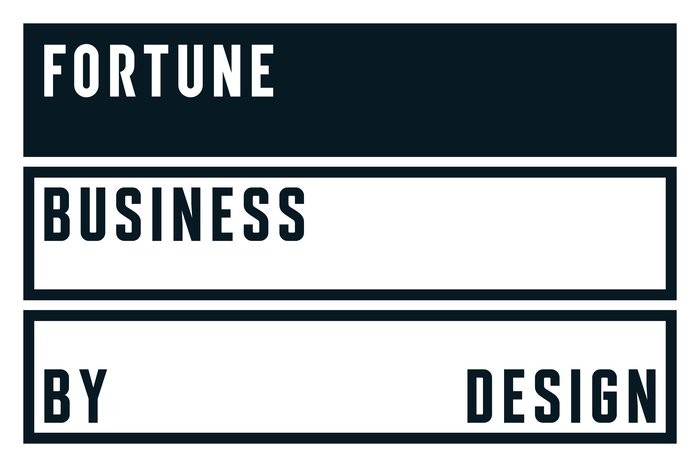
|
当今社会,科技与全球化使得颠覆性创新发生得比以往任何时代都要快。为了保持优势地位,那些聪明的企业纷纷从设计入手,以更好地联系客户,并找到自己的竞争优势。 在本文中,我们就来说说各行各业的25家通过设计致胜的公司。其中既有苹果这样的老牌设计之王,也有Zalando这种中国读者不太熟悉的公司。 当爱彼迎(Airbnb)的几位创始人讲起公司的创业故事时,他们经常提到2009年的那个时刻。当时创业孵化器Y Combinator的负责人保罗·格拉汉姆给了他们四句话的重要建议。 当时,爱彼迎的注册房东只有不到一千人,创始人布莱恩·切斯基、乔伊·杰比亚和内特·布莱扎兹克蜷缩在硅谷的一隅,试图靠捣腾数据和改版网站将公司做大。虽然爱彼迎一开始是家貌似很有前途的公司,但它每周的营收只有200美元左右。为了找到问题所在,格拉汉姆要求三个创业人对爱彼迎的用户进行研究:他们的用户到底在哪里? 在一篇报道中,《财富》记者利·加拉格尔描述了格拉汉姆听到爱彼迎最大的客户基数其实是在纽约之后的反应:“他停了下来,又对三人重复了一遍:‘也就是说,你们现在在加州的山景城,但是你们的用户在纽约?’三人面面相觑:‘是的。’格拉汉姆对他们说道:‘那你们还在这儿待着干嘛?快到你们的用户那里去!’” 飞越半个国家去客户混在一起,这番训话与硅谷的传统智慧很不搭调,因为硅谷人历来相信数据和技术能解决所有问题。不过在采纳了格拉汉姆的建议后,爱彼迎确实迎来了关键的突破。比如他们发现,帮助房东给他们的房子拍些高大上的照片,是很能招徕住客的。 最近十年,“用户体验”已经成了一个被说滥了的词。但它的基础理念,也就是同理心的力量,却也变得前所未有地强大。 这至少有两个原因:首先是现代化全球化数字化的伟力正在打破一切传统壁垒。大公司无法再依赖强大的产能、供应链和销售网络保护他们的优势地位不受竞争对手挑战。中国等新兴经济体的崛起以及大数据、物联网、平台经济、人工智能等新兴技术的发展,也使得大企业传统的后端防御机制渐渐无法招架。其次是复杂性的原因。然而设计却可以在这个纷繁复杂的超互联世界中为我们带来某种秩序与和谐。 在这种新常态下,明智的企业领导者们越来越认同设计是决定成败的一个关键因素。好的设计可以让你运用自己理解力取悦顾客和用户,并且真正与他们建立联系。 设计可以在纷繁复杂的超互联世界中为我们带来某种秩序与和谐。 近年来,各行各业都掀起了一场“设计运动”。“财富500强”企业纷纷高薪聘请首席设计官并投巨资建立设计中心和创新中心。各类专业服务机构也不甘人后。2013年,埃森哲收购了知名设计公司Fjord,而普华永道则重金吃下了数字创新咨询公司BGT。2015年,麦肯锡公司收购了硅谷设计公司Lunar,同年10月,印度软件巨头威普罗收购了设计公司Cooper,这也是继其2015年收购Designit后第二次收购设计公司。同时,不少顶级商学院和设计学家也纷纷开设跨学科课程,帮助MBA们像设计师一样思考,或是让设计师们像MBA一样想问题。 在今天的“最佳设计企业”专题中,《财富》精心挑选了25家致力于通过设计获得竞争优势的公司。为了鉴定他们的设计水平,《财富》也在设计界进行了一番调查,访问了多名高管,并且搜寻了许多证据证明这些企业在设计方面的投入。本文的结果在科学上并不严谨(毕竟设计这东西本身是很难量化的),而且它也并非一份充分完整的名单(现在将赌注押在设计上的企业太多了,光靠一期杂志显然报导不完)。不过本文提到的企业都走在产品设计领域的前沿,且一心致力于打造更智能、更体贴的产品和体验。 说到设计和“不同凡想”的伟力,没有哪家公司比苹果更有发言权了。虽说近几年也有人提出,苹果的设计魔力是不是有些消退了,但作为全球最有价值公司的苹果依然在不断推动创新设计的边界。除了苹果之外,包括Alphabet、亚马逊、Nike在内的很多领先企业的成功,也离不开对设计的精益求精。“设计思维”原本是IDEO公司创始人大卫·凯利2003年生造的一个词,但现在,它已经成了以用户中心型思维构建产品和服务的同义词。 当然,对于设计和“设计思维”的突然大热,持反对意见的也不乏人在。比如在2017年纽约的一场设计大会上,Pentagram公司的合伙人娜塔莎·詹就做了一场题为“设计思维是狗屎”的演讲,从而引发了一场激烈争论。她的主要观点是,设计从业者往往执著于标新立异,而忽视了自己的作品本身是否是一个不好的设计。科技设计师加迪·阿米特曾从事Fitbit手环和Lytro相机的设计,他表示,科技公司对“设计思维”的执迷会浪费掉大量时间,而且也已无法适应现代产品周期的惊人变革速度。 真理越辩越明,这样的争论是应该有的。2018年3月,《财富》将携手《时代周刊》和英国知名设计杂志《墙纸》(Wallpaper),在新加坡的“脑力风暴设计大会”上继续探讨这个问题。 不过有一件事是明显的:有了好的设计,生意几乎总是能做得更好。 下面便是2018年的“最佳设计企业”名单: |
Technology and globalization are leading to more and faster disruption than ever. To stay ahead, smart companies are turning to design to better connect with customers and find their competitive advantage. Here, we feature 25 companies from—Apple to Zalando—in a range of industries that are getting design right. When Airbnb’s founders tell their origin story, they often hark back to the moment in 2009 when Paul Graham, head of startup incubator Y Combinator, gave them four crucial words of advice. At the time, Airbnb had fewer than a thousand registered hosts. Founders Brian Chesky, Joe Gebbia, and Nate Blecharczyk were hunkered down in Silicon Valley, scrambling to scale the business by poring over data and revamping the website. After a promising start, revenue had flatlined at $200 per week. To figure out what wasn’t working, Graham pressed the trio for information about Airbnb’s users. Where were they, exactly? In The Airbnb Story, Fortune’s Leigh Gallagher recounts Graham’s reaction upon learning that the largest concentration of them resided in New York City: “[He] paused and repeated back to them what they had just told him: ‘So, you’re in Mountain View, and your users are in New York?’ he asked. They looked at each other, then back at him. ‘Yeah,’ they said. ‘What are you still doing here?’ Graham said to them. ‘Go to your users.’ ” That exhortation—to fly across the country and hang out with customers—defied a fundamental tenet of Silicon Valley wisdom: that data and technology are the solution to every problem. And yet, for Airbnb, heeding Graham’s advice led to key breakthroughs. Among them: Helping hosts produce better photos of their properties would boost business. (For more on Airbnb and design, see Gallagher’s Q&A with Gebbia.) A decade on, “user experience” is among the tech industry’s most overused buzz phrases. But the underlying idea—that there is power in empathy—has never been more profound. That’s true for at least two reasons: One is that the great forces of the modern age, globalization and digitization, are removing traditional barriers to entry. Large firms can no longer rely on great manufacturing capacity, a superior supply chain, and established distribution networks to defend their market position from challengers. The rise of China and other emerging economies, combined with newfangled technological developments like big data, the Internet of things, platform economies, A.I., and automation are combining to flatten and commodify traditional back-end defenses. A second reason is complexity. Design can help bring order and coherence to the chaos of our hyper-connected world. In this new landscape, smart corporate leaders are embracing the idea that design—channeling insight to delight and truly connect with customers and users—can be a crucial differentiator. Design can help bring coherence to the chaos of our hyper-connected world. The result is a major design moment. Fortune 500 companies are hiring chief design officers and investing heavily in design centers and innovation centers. Professional services firms, too, have joined the fray. In 2013, Accenture acquired Fjord, a leading design firm, while PwC snapped up BGT, a digital creative consultancy. In 2015, McKinsey & Co. purchased Lunar, a Silicon Valley–based design firm. In October, Indian software giant Wipro acquired design agency Cooper, adding to its 2015 purchase of Designit. Meanwhile a host of top business and design schools have introduced interdisciplinary programs to help MBAs think more like designers and vice versa. In the “Business by Design” package, Fortune highlights some two dozen companies that have turned a commitment to design into a competitive advantage. To identify them, Fortune surveyed the design community, grilled executives, and searched for evidence of true corporate commitment. The result is not a completely scientific list. (Design, for the most part, is not quantitative.) And it’s not a truly comprehensive list. (Too many companies are betting on design these days to include in one issue of the magazine.) But all of the companies that made the cut are at the forefront of the movement to create smarter, more thoughtful products and experiences. No company tops Apple (AAPL, +0.03%) for demonstrating the strategic power of great design and learning to “think different.” While there is a raging debate about whether or not Apple has lost some of its design mojo in recent years, as the story “Has Apple Lost Its Design Mojo” explores, the world’s most valuable company continues to push boundaries. Meanwhile, a host of other leading companies, including Alphabet, Amazon, and Nike, have achieved success by expanding design capabilities. The phrase “design thinking,” coined back in 2003 by IDEO cofounder David Kelley, has become synonymous with taking a user-centric approach to creating products and services. The sudden enthusiasm for design and design thinking has its detractors. Pentagram partner Natasha Jen sparked a lively debate at a New York design conference early in 2017 with a presentation titled “Design Thinking Is Bullshit.” Her main complaint: that practitioners too often neglect to call out bad design. Gadi Amit, a technology designer who has worked on Fitbit trackers and the Lytro camera, frets that design thinking’s obsession with empathy leads to wasted time and is out of step with the breakneck pace of modern product cycles. It’s a debate worth having. And one that Fortune will continue this March in Singapore, in collaboration with colleagues at Time and Wallpaper*, at a new conference we’re launching called Brainstorm Design. One thing is clear, though: Business is almost always better by design. —C.C. See our full 2018 Business by Design list below. |
苹果/Apple
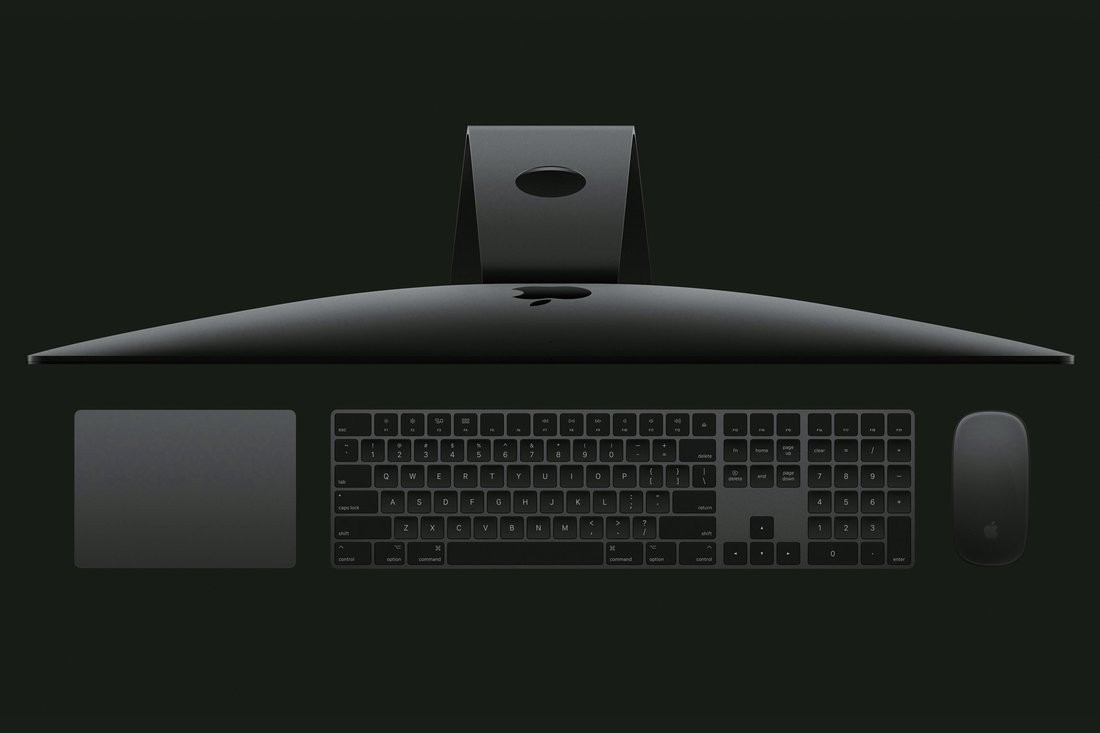
|
苹果的“设计魔力”消失了吗? 整整一代的无与伦比的产品,使苹果成了世界上最有价值的公司。不过现在也有不少果粉质疑后乔布斯时代的苹果还剩下几分设计功底。其实苹果的设计水平依然是业界顶尖的,你可点此了解更多。 |
Has Apple Lost Its Design Mojo? A generation of peerless products made Apple the world’s most valuable company. Now some in the i-universe are questioning if the magic—in the post–Steve Jobs era—is still there. Don’t believe the naysayers. Read more. |
戴森/Dyson

|
什么样的吹风机最酷?一要有强大的研发,二要有高度的专注 英国工业设计师詹姆斯·戴森的神奇之处,就在于他将颠覆性的创新技术与“苹果流”的极简主义融为一体,将吸尘器、电风扇、吹风机这种无趣的家用产品变成了令无数人心仪的东西——比如上图中的戴森超声波吹风机。它的研发耗时足足4年,光原型机就设计了600多个。它内置的数字马达的重量只有传统吹风机的一半,速度却是传统吹风机的八倍。 如此的严谨对戴森来说并非孤例。戴森是英国机器人和人工智能领域的最大投资者。随着公司的工程师和科学家越来越多(到2020年或将翻一番,达到6000人),2017年9月,戴森公司还成立了一所内部大学——戴森工程技术学院。戴森公司还计划在2020年前投资26亿美元用于研发电池动力汽车。 |
When is a hair dryer cool? When it’s the product of powerful R&D and laser-like focus British industrial designer James Dyson has spent his career marrying disruptive technology with an Apple-esque minimalism to transform drab everyday appliances such as vacuum cleaners, fans, and hair dryers into products with cult followings. Case in point: the Dyson Supersonic hair dryer pictured above. Developed over four years and through 600 prototypes, it features a digital motor half the weight and eight times the speed of a traditional dryer. Such rigor is no anomaly. Dyson is the U.K.’s biggest investor in robotics and artificial intelligence research. In September, the company launched the Dyson Institute of Engineering and Technology, a university within its office grounds, to feed its growing headcount of engineers and scientists, which Dyson predicts will double to 6,000 by 2020. Dyson also plans to invest $2.6 billion into developing battery-operated vehicles in the same time frame. —D.Y. |
谷歌/Google

|
用心去做电子消费产品和软件 成熟的谷歌终于有了自己的审美了。像苹果、雅虎、亚马逊等很多科技公司一样,早期的谷歌在审美上也有过一段不堪回首的经历。早期的谷歌喜欢的是恣意使用各种颜色、字体和标点符号的“杀马特”式审美(不信的可以看看1998年的谷歌主页)。随着时间的推移,谷歌的大多数竞争对手们也都成熟了,渐渐放弃了那些不上档次的审美怪癖,风格越来越靠近极简主义,在颜色搭配上也越来越控制和考究,其中最具代表性的就是那种光滑亮泽、颇具未来主义和德式工艺风的“苹果范儿”。不过在19岁生日来临之际,谷歌却重拾起了它的少年心,将先进的工业设计、软件设计与奇怪的造型、新材料和明亮的颜色(比如Pixel 2手机的电源键)相结合,在这样一个手机外观设计千人一面的时代,迸发出了丰富的人的活力——这也提醒了上面那几家科技巨头,尽量别把自己搞得太严肃了。 三星/Samsung 整体的战略信念 前几年,三星还站在法庭上针对苹果的指控竭力辩驳“你凭什么污人清白”,不过经过几十年的厚积薄发,三星也终于摘掉了廉价机的帽子。如今的三星是在研发上最舍得下本的科技公司了。它的电视、电话、家电、服务和地产等也都在市面上颇受追捧。 亚马逊/Amazon 以人为本的资本主义 好设计不仅看审美,更看功能。说到功能性,谁能拼得过“卖一切”的亚马逊呢?从强大的电商网站,到线下的无现金实体店,再到亚马逊出品的一系列语音控制设备,亚马逊对顾客的关注始终是不容忽视的。 华为/Huawei 打造创新基础 现下,中国的科技巨头纷纷将眼光瞄准了海外市场,可由于知识产权的原因,很多中国公司也只能是望洋兴叹了。不过华为却有闯荡海外的底气。这家总部位于深圳(可不是“山寨”哦)的设备厂商在软硬件专利上已经走在了全球前列。 微软/Microsoft 为99%的人而设计 微软的界面设计相当杰出,它现代都市感的设计语言和互动化的流畅设计体系都非常值得称道。但其最杰出的一点,就是它对包容性设计的专注,哪怕是残疾人也可以一样使用它的产品。 |
In search of consumer electronics and software with soul Google is all grown up. As with many tech companies—Apple, Yahoo, even Amazon—Google’s design language has come a long way since its kaleidoscopic early days, when every color, typeface, and punctuation mark was used with abandon. (Seriously—just look at that 1998 homepage.) Over time, most of Google’s peers matured by shedding their quirks and shades in favor of minimalist forms and a restrained palette, best embodied by the sleek, futuristic, Braun-influenced stylings of Apple. Not Google. In the wake of its 19th birthday, the company, now part of the conglomerate known as Alphabet, has retained the personality of its youth by wedding sophisticated industrial and software design (have you seen Google Home and Android 8.1?) with strange shapes, novel fabrics, and pops of bright color, such as the power button on its new Pixel 2 phone. In a world where today’s angular machines are plastic and glass, black and white, and altogether expressionless, Google’s products burst with the exuberance of, well, humans—a signal to its peers that they shouldn’t take themselves too seriously. —A.N. Samsung Holistic, strategic conviction It wasn’t so long ago that Samsung found itself in a courtroom defending its creativity against Apple. But the company’s decades-long bid to move beyond its reputation as a budget brand has paid off. Today Samsung is tech’s largest spender on R&D. And its TVs, phones, appliances, services, and offices? Covetable. —A.N. Amazon Human-centered capitalism Good Design isn’t limited to aesthetics; it is equally about function. And what could be more functional than the store that sells everything? From its bulletproof website to its cashierless stores to its family of speech-enabled devices, Amazon’s customer focus cannot be ignored. —A.N. Huawei Building a base of innovation When China’s tech giants looked to markets beyond their own shores, it was clear that many wouldn’t be able to make the trip thanks to dubious intellectual-property portfolios. Not Huawei. The Shenzhen (but not shanzhai) gadget maker is a leader in international patents for software and hardware alike. —A.N. Microsoft Design for the 99% There’s much to be said about Microsoft’s whiz-bang interfaces, modern Metro design language, and interactive Fluent Design System. But what sets this titan apart is its emphasis on inclusive design that makes products as accessible to people with disabilities as to those without. —A.N. |
IBM
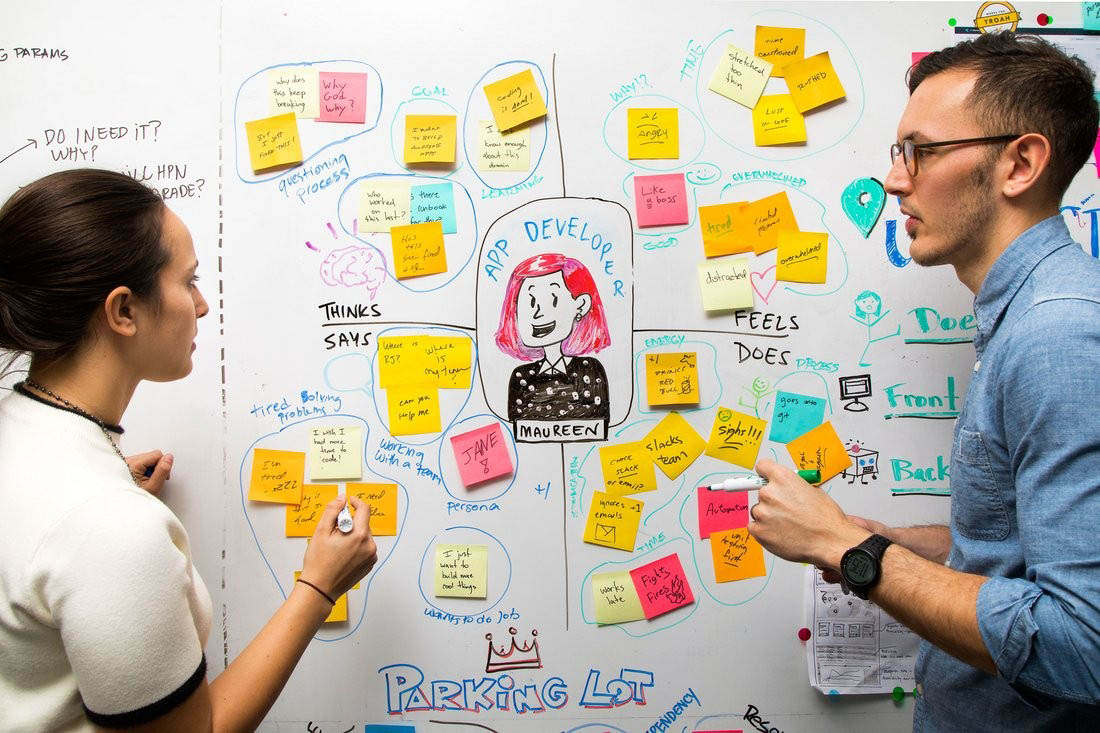
|
为顾客贴上便利贴 为了在认知计算和网络安全时代赢得胜利,IBM也在设计思维上投下重注。所谓的“重注”有多重?据说IBM的设计团队是全球企业中最大的。 |
Putting a sticky note on the customer To win in the age of cognitive computing and cybersecurity, the venerable tech giant is betting big on design thinking. How big? It now boasts the world’s largest design team. Read more. |
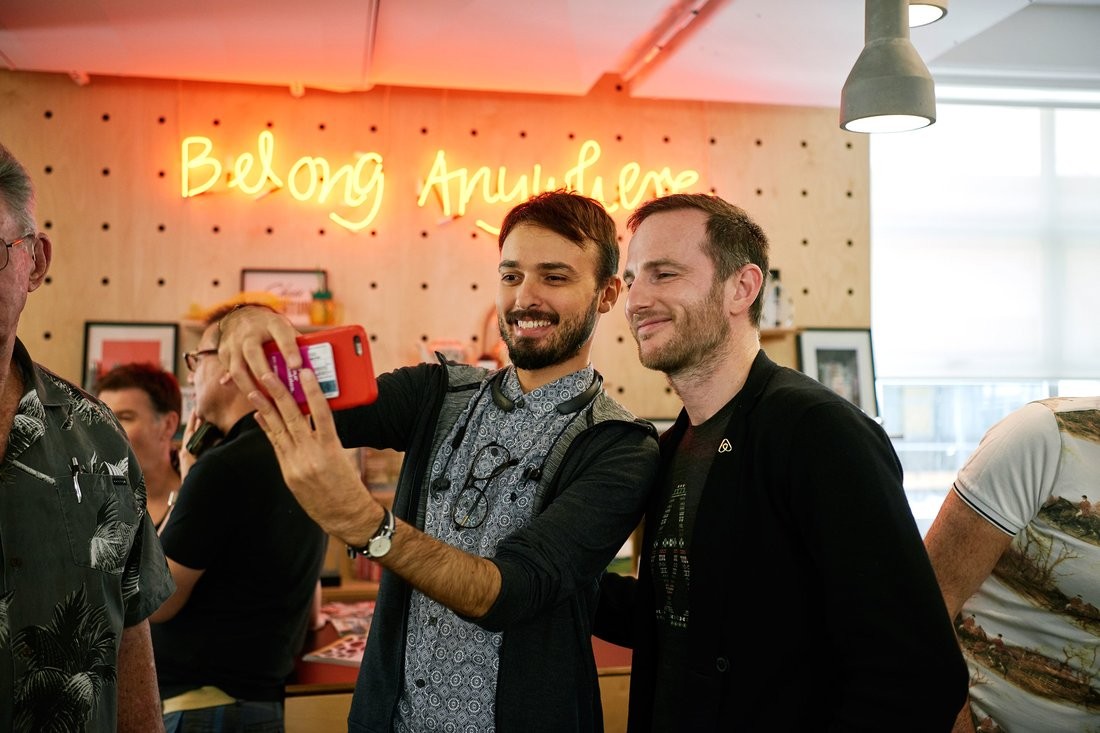
|
很少有哪家公司像爱彼迎一样重视设计思维。其三名创始人中有两名(首席产品官乔伊·杰比亚和CEO布莱恩·切斯基)毕业于罗德岛设计学院。这一点最初让一些“唯学历论”的投资人对他们敬而远之,但事实证明,他们的设计学背景其实是个很大的优势。现在的爱彼迎已经成了共享经济领域响当当的一家公司,估值高达310亿美元。杰比亚还兼任爱彼迎的设计与创新工作室Samara的负责人。 |
Few companies have emphasized the importance of design thinking as much as Airbnb. Two of the San Francisco startup’s three cofounders, chief product officer Joe Gebbia and CEO Brian Chesky, are graduates of the Rhode Island School of Design (RISD)—a biographical detail that turned off some investors at first but turned out to be a big advantage for the sharing-economy giant, now valued at $31 billion by investors. We spoke with Gebbia, who also serves as head of Samara, the company’s in-house design and innovation studio, about his ¬approach to design. Read our Q&A with Joe Gebbia here. |
Musical.ly
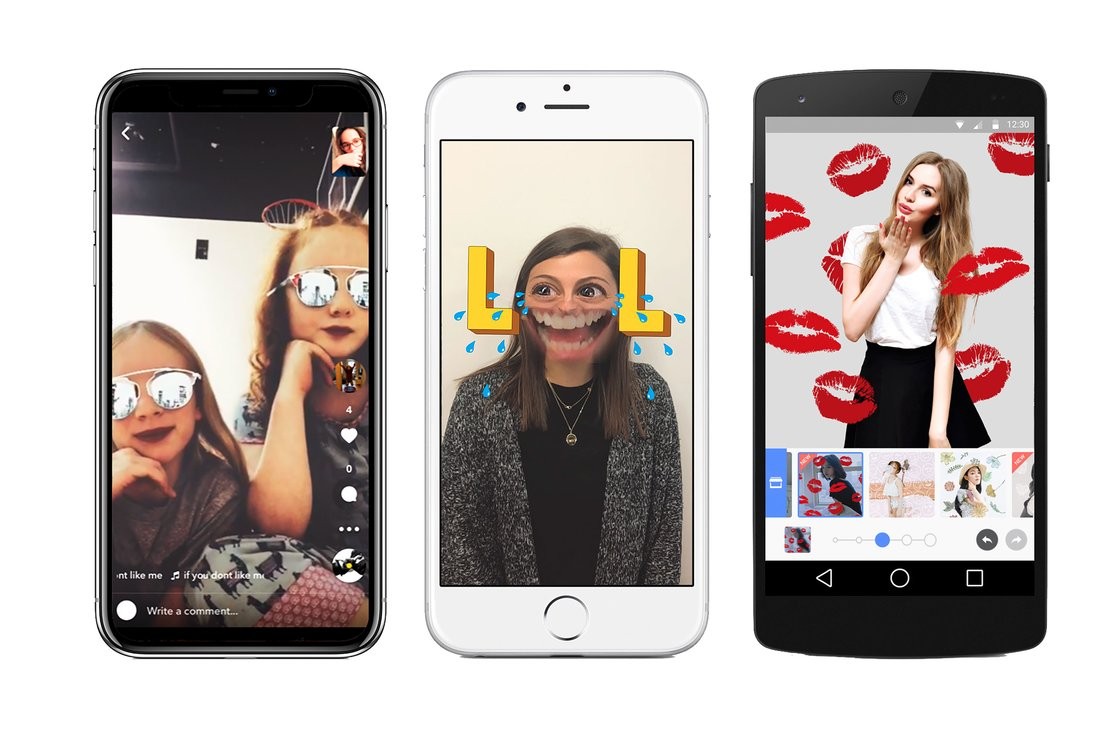
|
一款大热社交视频应用的秘诀是什么?答案是:一个注定会火的设计 MTV什么的早就是上世纪的玩意了。现在的年轻人会自己录制唱歌的MV和视频小表情发布到一个叫做Musical.ly的热门应用上。可能很少有人知道,这个“对口型”应用其实是一款纯粹的国产应用,起初它是出于教育用途发布在某平台上,没想到孩子们对微积分没兴趣,反而在这款应用上疯狂模仿起了泰勒·斯威夫特。这家公司之所以增长得如此之快,也离不开几个小而重要的设计创新——比如APP的水印是可以移动的,这样就不必担心它被分享到其他应用上。目前该应用已经拥有6000万名月活跃用户,而且被中国互联网公司今日头条以10亿美元收购了。 |
The secret to this wildly popular social video app? A design that’s engineered to go viral MTV is sooooo last millennium. Today’s tweens produce their own music videos by accessing libraries of 15-second song clips—not to mention a plethora of ridiculous face “lenses”—on the hit app Musical.ly. The founders of the China-based, DIY lip-synching service, originally launched as a platform for educational tutorials, caught on to the fact that kids prefer copying Taylor Swift to watching calculus how-tos early on. Another lesson? Small but significant design tweaks—like moving the Musical.ly logo so that it wouldn’t be cropped out when shared on other apps—helped the company grow its user base much faster. All of this has helped the booming music video maker generate 60 million monthly active users and get snapped up by the Chinese Internet firm Toutiao for as much as $1 billion. —M.L. |
|
Snap 用户体验新旅程 老实说,你刚下载Snapchat时,或许根本就不知道它怎么用。我应该滑动屏幕吗?菜单栏在哪呢?Snap打破传统的用户体验也延伸到了它热门的滤镜和不那么受欢迎的眼镜配件上,让一个高度依赖内容的领域焕发了新的生机。 美图 胜过最牛逼的化妆 曾几何时,PS的图片总是看起来不太自然。然而来自中国的一款神奇应用——美图,却让千百万年轻人拥有了美化自拍照片的能力。自从有了美图,什么亮眼、柔肤、瘦脸、丰胸都不在话下。美图公司出品的系列应用(美颜相机、潮自拍、美妆相机)已经在全球范围内被下载安装到了10亿多部手机上,它让高深的AR和机器学习技术以这样一种方式普及到了千家万户。美图成功的秘诀,就在于将自拍的艺术做到了极致,同时迎合了年轻人的自恋需求。 保护体验 我们刚刚才表扬了打破用户体验规则的Snap。而对于Snap的竞争对手Instagram,我们建议其在添加了视频和故事功能后(这也是抄袭Snap的),继续在它的核心体验中保持舒适的社交环境。当然,这与它的母公司Facebook给出的一系列选项显然南辕北辙。 |
Snap New adventures in UX Let’s be honest: You probably didn’t know how to use Snapchat when you first downloaded it. Do I swipe? Where’s the menu? Snap’s convention-busting approach to user experience, which extends to its popular filters and unpopular Spectacles, reinvigorated a category known for its heavy reliance on feeds. —A.N. Meitu The most intuitive makeovers imagined Touched-up photos never looked so good. Yet another China-based app maker, Meitu (the name means “beautiful picture” in Chinese), is enabling millions of young people to enhance their selfies—brighten eyes, smooth out skin, tweak and enhance features, or whatever their mobile-first heart desires. The company’s series of apps (think BeautyCam, SelfieCity, and MakeupPlus) have been downloaded and installed on more than 1 billion phones worldwide, making complex technologies like augmented reality and machine learning accessible to regular people. Meitu’s secret sauce? Tapping into the current demand for mobile apps that do one thing and do it well—plus catering to narcissistic tendencies. —M.L. Protecting the experience Sure, we just celebrated Snap for breaking the UX rules. But we commend rival Instagram for preserving its soothing social environment even as it adds live video and Stories (copied from Snap, naturally) to its core experience. It’s a far cry from the busy buffet of options offered by parent Facebook’s namesake app. —A.N. |
特斯拉/Tesla

|
重新定义汽车行业 特斯拉的意义不仅在于做火了电动汽车,而是为所有车主设计了新的出行典范。 福特 |
Redefining an industry It’s not just about making electric cars sexy. Elon Musk’s ultra-ambitious company is designing a new paradigm for all drivers. Read more. Ford |
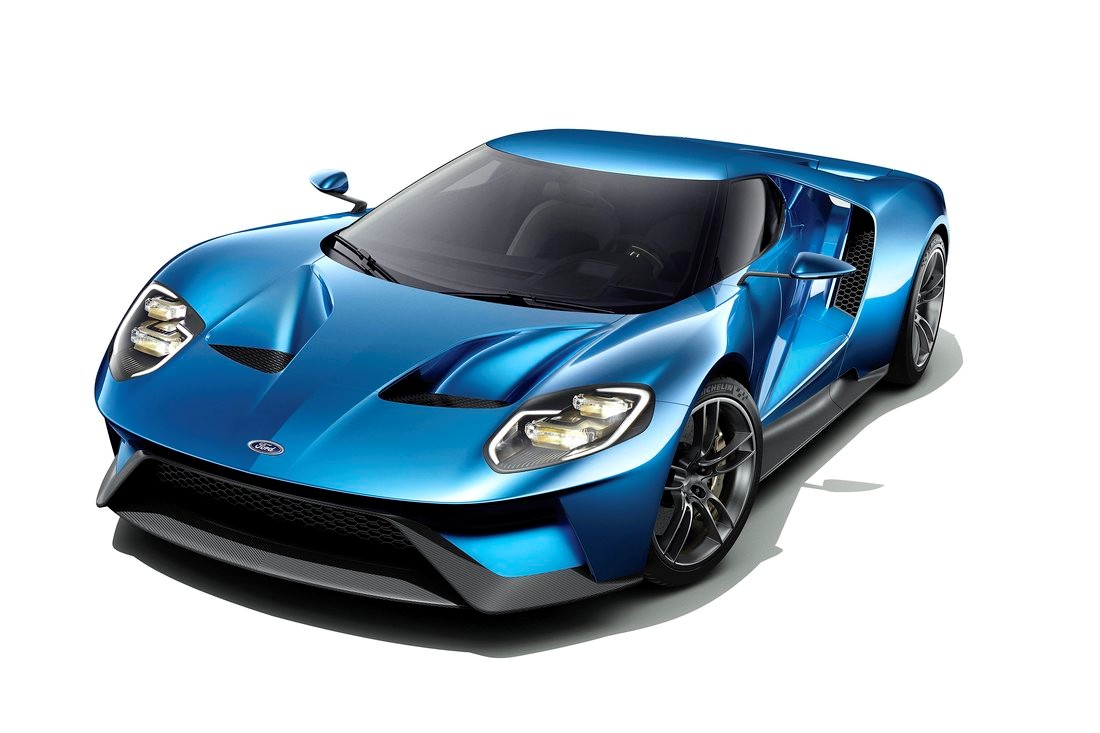
|
提高对设计的重视 自从五月执掌福特以来,以设计思维见长的吉姆·哈克特就在加速推动福特的设计转型。(哈克特也是所谓的“开放办公计划”之父,他在加盟福特前曾任Steelcase公司CEO。)其中,快速的原型产品设计与构思以及对于“移动化”的关注都是变革的一部分 奥迪 |
Revving up the focus on design Since taking charge of the Detroit auto giant in May, design-thinking acolyte (and, prior to joining Ford, the father of the open-office plan, as CEO of Steelcase) Jim Hackett has been shifting gears at the maker of the iconic F-150 pickup truck. Rapid prototyping and ideation are part of that process, as well as a focus on “mobility” as much as cars. —E.F. Audi |

|
为驾驶员提供新视野 作为大众旗下高端品牌的奥迪公司在2017年开设了一家全新的设计中心。然而事实上,为了建立高质量、高科技的设计形象,奥迪已经在设计上浸淫了多年。尤其是在车内设计上,无论是美观先进的多媒体显示屏,还是精心设计的灯光和声音系统,都能给乘客带来美的享受。 现代 快速迈向新技术 卖车的关键是速度。现代公司于2017年下半年在首尔南部开设了一间庞大而先进的设计工作室,或许也与这一理念不无关系。现代公司希望将设计一辆轿车的时间(3年)缩短一半,好赶上无人驾驶汽车创业品牌Waymo等竞争对手的速度。
|
Offering drivers a new vision The high-end German automaker, a division of Volkswagen, opened a spiffy new design center in 2017. But it’s been building a reputation for high-quality, tech-forward designs for quite some time. That’s especially true in the auto cabin, where passengers are treated to sleek, state-of the-art displays and obsessively engineered lighting and sound systems. —E.F. Hyundai Moving fast into new technology when it comes to selling cars, it’s all about speed—or such is the rationale that led Hyundai to open an enormous, cutting-edge design studio south of Seoul in late 2017. The Korean automaker hopes to cut in half the time (three years) it takes to design a car—an effort, in part, to keep pace with new rivals such as autonomous vehicle startup Waymo. —E.F. |
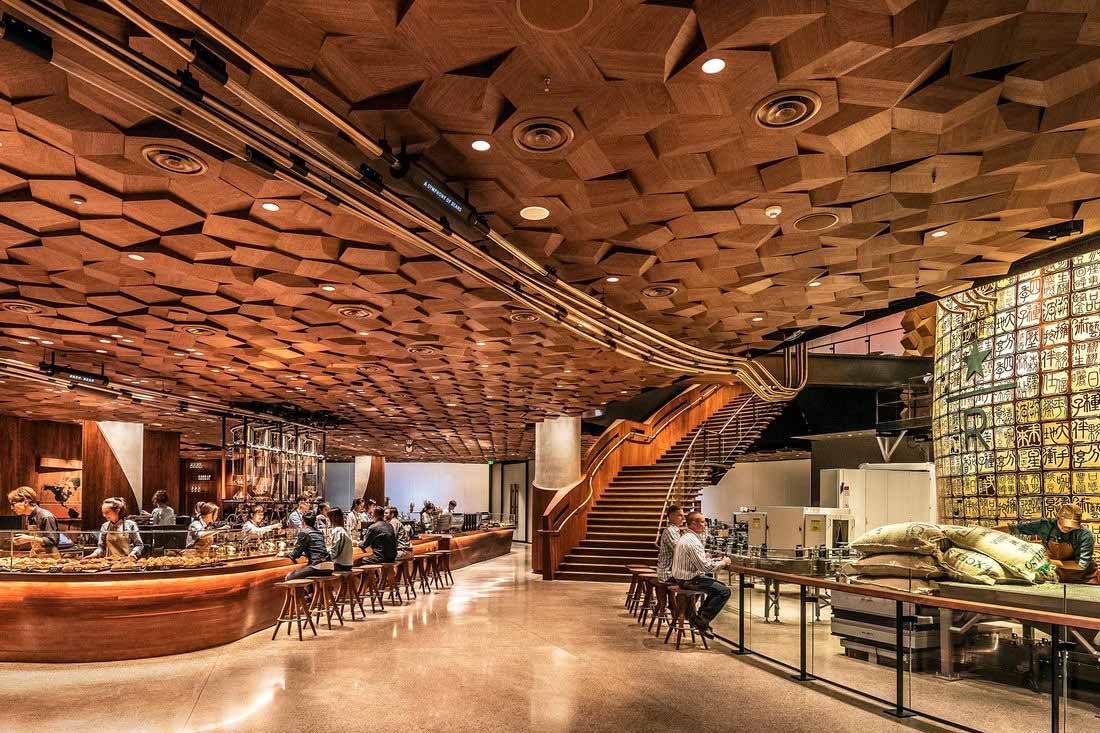
|
星巴克如何在全球打造个性化体验? 作为全球最大的连锁咖啡店,星巴克卖的不仅是咖啡——它还想卖一种体验。星巴克的创意和全球设计高级副总裁利兹·穆勒表示,星巴克在全球有27,000多家门店,公司将每家门店都设计得如同当地的本土咖啡店一样。有时根据国家和社会的情况,还会邀请一些知名设计师(如日本的隈研吾)来设计一些细节。 近日,星巴克在上海新开张了一家占地30,000平方英尺的原生态焙烤咖啡体验馆。它既是星巴克全球第二家超豪华烘焙工厂店,也是星巴克至今为止在全球范围内的最大门店。在店内的显眼处放着一把由中国匠人手中雕琢的紫铜壶,类似的中国元素在店内的烘焙吧和茶瓦纳吧也可以看到——这两个区域也是星巴克第一次单独开设。另外该店还提供了“VR之旅”,其技术由中国电商巨头阿里巴巴提供。
|
How the Seattle coffee giant is creating custom experiences worldwide The world’s biggest coffee chain doesn’t just sell java—it wants to serve up an experience. Starbucks has crafted each of its 27,000 outlets worldwide to feel like locally owned and designed cafés, says Starbucks’ senior vice president of creative and global design, Liz Muller. Artists, and the occasional “starchitect”—such as Japan’s Kengo Kuma—are tapped to customize details by country and community. Muller’s latest feat: a sprawling 30,000-square-foot Starbucks Reserve Roastery in Shanghai that opened in December. It’s the second of Starbucks’ ultra-luxurious innovation lab spinoffs and its largest store to date. A copper kettle roaster hand-carved by Chinese craftsmen takes pride of place in the outlet, which also features an on-site bakery and Teavana bar—both firsts for Starbucks—and virtual reality tours powered by Chinese e-commerce giant Alibaba. —D.Y. |

|
卖得更多,但用得更少 很多人走进宜家购物时可能并不知道,宜家无形中将它的几百万顾客都变成了环保主义者。宜家宣称其使命是要减少它销售的所有商品的碳排放,而只要购买了宜家的商品,消费者就会无形中成为这个宏伟目标的一部分。 宜家认为,环保问题是可以通过设计解决的。比如木头出现在宜家三分之二的家具产品中。2016财年,宜家的木材使用量较上年减少了2%,然而它卖出的木制品实际上更多了。一种方法是在它经典的Billy书架产品中使用了双密度胶合板,从而使材料耗费减少了20%。宜家的设计也有助于消费者在家中节省资源。比如它的所有厨房水龙头都内置有通气装置,这种设计能达到相同的压力流和用水感,但实际上却能节约40%的用水。 宜家的绿色设计理念也取得了成功。2016年,宜家的环保设计产品的销售额约为20亿美元,现在宜家已经将目标调整为在2020年达到30亿美元了。
|
Selling more, but using less There’s an irony in how Ikea—a company whose business is selling stuff, and lots of it—is turning the millions of customers who visit its stores every day into accidental environmentalists. By buying Ikea’s products, consumers also are inadvertently buying into the Swedish furniture giant’s mission to reduce the footprint of everything it sells. Ikea views its environmental impact as a problem that can be solved with design. Take wood, which shows up in about two-thirds of the company’s home furnishings. In its fiscal 2016, Ikea used 2% less of the material than it did the previous year, despite selling more wood products. One way was by using dual-density particleboard in its iconic Billy bookcases, which cut down on materials by 20%. Ikea’s design work is also helping customers use fewer resources at home. All of its kitchen faucets now have an aerator. The feature mixes in air with the pressure flow to achieve the same feeling of wetness while using 40% less water. The green design mindset has paid off too. Sales of sustainable products were around $2 billion in fiscal 2016, and Ikea is targeting about $3 billion by the middleof 2020. —B.K. |
百事/PepsiCo
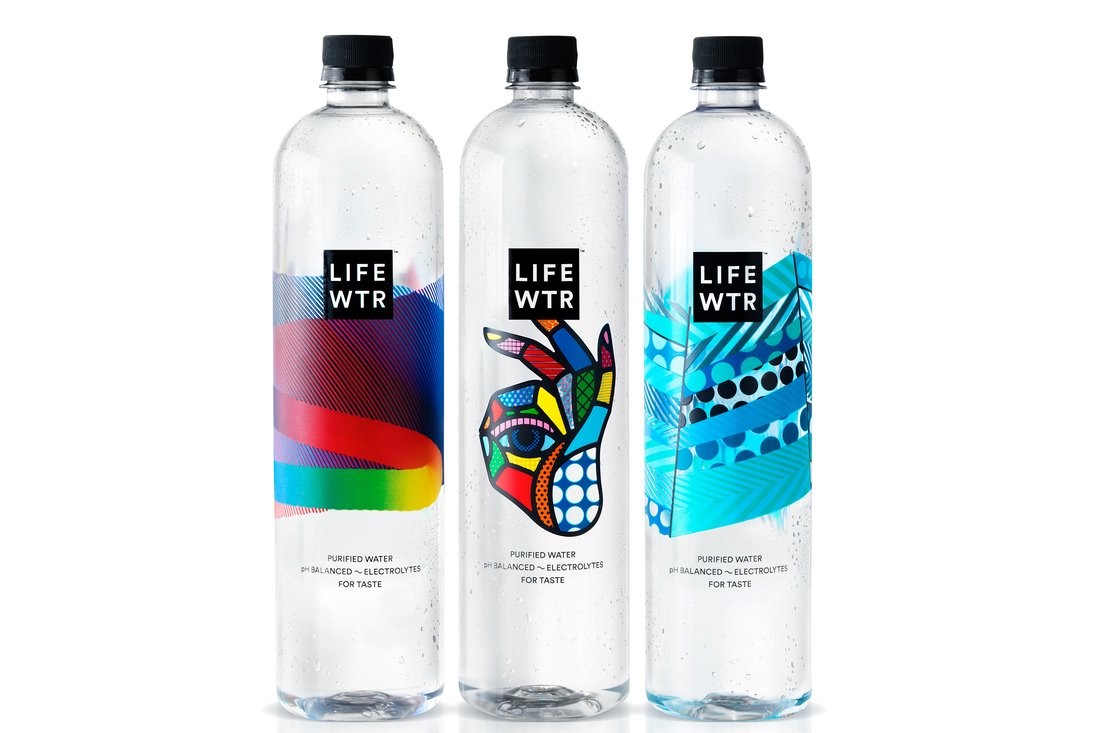
|
向产品灌输活力 好的设计远远不只是给汽水瓶子设计哪种蓝色图案这么简单,这也是为什么百事CEI卢英德2013年从3M公司请来了莫洛·普契尼做首席设计官,并将设计思维作为公司的优先战略要务,并于次年在纽约迅速成立了设计与创新中心。对设计的关注也催生了一系列新产品。比如2016年,百事公司推出了一种高价瓶装水Lifewtr,它的包装就是由艺术家设计的,而且每年都会改变几次。 第一资本 跳出银行业思考 银行业和先进设计似乎并不沾边,但第一资本公司却跳出传统银行的角度,用设计思维将自己改造成一家软件公司和创新孵化器。在收购了设计公司Adaptive Path和Monsoon后,第一资本最近推出了一些全新的数字化功能,比如能发emoji小表情的短信聊天机器人、能追踪GPS位置信息的交易历史功能等等。2018年年初,第一资本还将在美国里士满成立自己的1717创新中心。该中心占地42,000平方英尺,拥有一个体验设计研究室。该中心通过与孵化器项目合作,或将资助50家左右的创业公司。 |
Infusing products with fizz Good design is about more than picking out the right shade of blue for a soda can. That’s why PepsiCo CEO Indra Nooyi recruited chief design officer Mauro Porcini from 3M in 2013 and made design thinking a strategic priority for the food and beverage giant. The creation of a Design and Innovation Center in New York swiftly followed in 2014. And PepsiCo’s new emphasis on design has led to a pipeline of creative products. Earlier this year, for instance, PepsiCo launched Lifewtr, a premium-priced bottled water featuring labels that are designed by artists and change several times per year. —D.Y. Capital One Thinking outside the branch Banking and cutting-edge design don’t automatically go together. But Capital One has adopted design thinking as a mantra to reinvent itself as a software company and innovation incubator, rather than a traditional bank. After acquiring design firms Adaptive Path and Monsoon, Capital One has recently rolled out fresh digital features, from an emoji-enabled SMS chatbot to GPS-tracked transaction histories. In early 2018 it will unveil its 1717 Innovation Center in Richmond, a 42,000-square-foot facility housing an experience design research lab and, through a partnership with an incubator program, some 50 startups. —D.Y. |
优衣库/Uniqlo
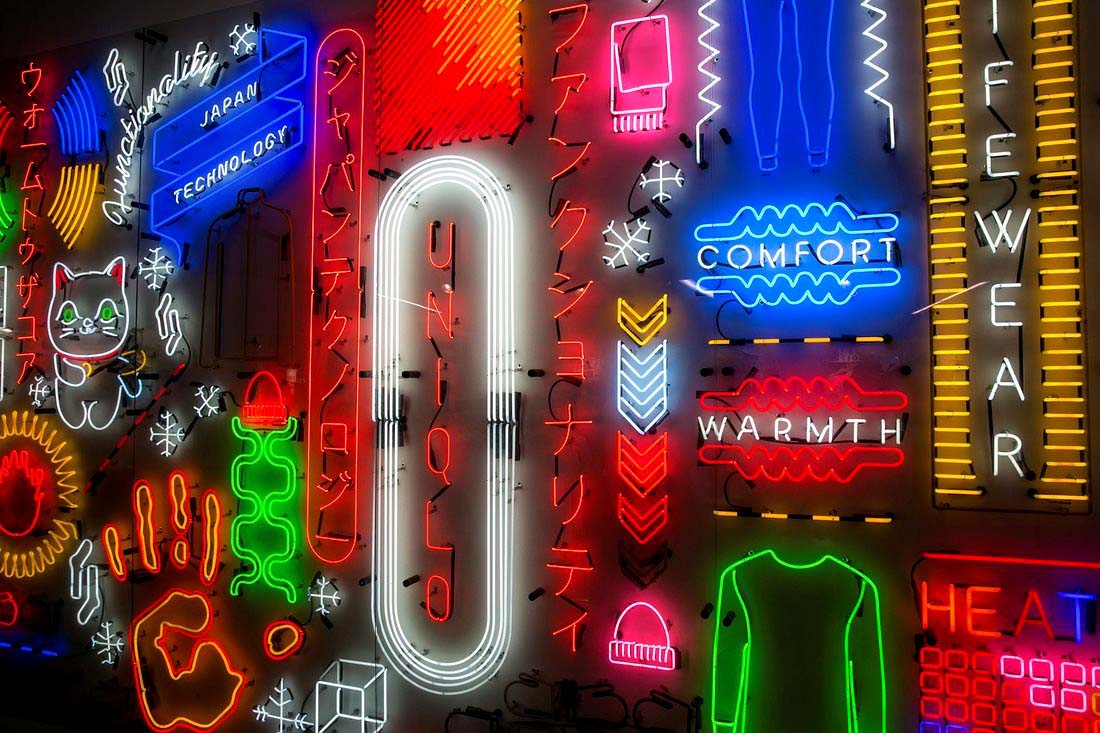
|
从法瑞尔到任天堂,日本快速时尚品牌优衣库的合作伙伴遍布各界,为其赋予了独特优势 不了解日本零售品牌优衣库为何迅速火爆全球的人,只需看看优衣库的总部就明白了。优衣库的东京总部“优衣库城”启用刚满9个月,占地约188,000平方英尺。它的设计是煞费了苦心的,内部还有一间杂志图书馆和一间菜品十分丰盛的餐厅。优衣库总部的标准即便拿到硅谷也是相当看得过去的。在这方面,它也是日本企业中第一个敢于挑战传统的公司。 优衣库创始人柳正井也坦承,当他在2001年接手父亲的成衣店,并将其重新命名为“独特服装仓库”(Unique Clothing Warehouse)时,他就意识到,自己必须采取一种全球化的心态。他战略性地在纽约、伦敦、上海等核心城市开设了一些全球旗舰店,并且与任天堂、漫威、法瑞尔·威廉姆斯等知名品牌和流行文化偶像进行了设计合作。就这样,来自广岛的一家名不见经传的休闲服务连锁店,如今已经成了亚洲营收入最高的服装制造商,在全球拥有1900多家门店。 优衣库在全球范围内开设了一些设计和研发中心,同时也在积极探索用人工智能进行设计的可能性,以更好地促进“快时尚”与实用性的结合。优衣库的产品设计与全球研发高级副总裁胜田幸宏曾说过“人们想让生活变得容易,而衣服也应该让人们的生活中的某些事变得容易,比如易于保养,易于行动等。” |
Collaborations with everyone from Pharrell to Nintendo give the Japanese fast-fashion retailer a distinct edge To gain insight into how Japanese retail brand Uniqlo so quickly attained ubiquity around the world, consider parent company Fast Retailing’s nine-month-old headquarters in Tokyo. Named Uniqlo City for its vast 188,000-square-foot sprawl, the ¬painstakingly designed space—with its magazine library and fully stocked cafeteria—could easily pass for the office of a cutting-edge Silicon Valley firm, and is the first of its kind to challenge convention in corporate Japan. Likewise, company founder Tadashi Yanai acknowledged early on that he had to adopt a global mindset when he took over his father’s suit store in 2001 and renamed it the Unique Clothing Warehouse. By strategically planting global flagship stores in key cities, including New York, London, and Shanghai, and through design collaborations with prominent pop culture icons and brands such as Nintendo, Marvel, and Pharrell Williams, Yanai built his casual-wear chain from Hiroshima into what is now Asia’s largest clothing maker by revenue, with over 1,900 stores worldwide. Uniqlo has also opened design and R&D centers worldwide, and is exploring the use of A.I. in design in its quest to perfect the marriage of “fast fashion” design and utility. As Yuki Katsuta, Uniqlo’s SVP of product design and global research, once said of the company’s ethos: “People like to make their life easy, and their clothes should make their life easy for something. Easy for maintenance. Easy for action.” —D.Y. |
Nike

|
在CEO马克·帕克的领导下,Nike正在加快定制化的速度 互联网一代人对需求强调“即时满足”,因此零售商们也在竞相缩短他们的生产周期。2017年九月,Nike公司创新推出了90分钟获得定制跑鞋的“Nike制造者体验计划”,它也被很多人赞誉为“零售的未来”。位于纽约市的Nike By You工作室使用了AR、物体追踪和投射系统来设计定制的鞋子,购物者只需一个多小时就能拿到自己的定制鞋。 Nike首席执行官马克·帕克本人也曾是一名鞋子设计师。他强调,创新是推动53岁的Nike公司转型的关键。(一个积极迹象是,Nike股价在过去一年中已经上涨了27%。)帕克与公司的设计副总裁约翰·霍克一道管理着1000多名设计师。这个庞大的设计团队几乎负责公司的方方面面,比如从可回收材料“飞织”和“飞羽”的研发生产,到专门面向穆斯林运动员的“Pro Hijab”头巾的设计等。 |
Led by CEO Mark Parker, the athletic-shoe titan is picking up the pace on customization Spurred on by the Internet generation’s demands for instant gratification, retailers are racing to shorten their production lead times. In September, Nike pulled ahead of the pack when it debuted the 90-minute Nike Makers’ Experience, dubbed by many as the future of retail. The Nike By You Studio in New York utilizes augmented reality, object tracking, and projection systems to custom-design shoes, which shoppers can collect on-site in just over an hour. As a former shoe designer, Nike CEO Mark Parker has emphasized innovation as key to transforming the 53-year-old company. (A positive sign: Nike’s stock is up 27% over the past year.) Together with VP of design John Hoke, Parker manages a team of 1,000 designers overseeing everything from the development and production of Nike’s sustainable, recycled Flyknit and Flyleather materials to incorporating inclusive designs such as Nike’s Pro Hijab for Muslim |
Zalando
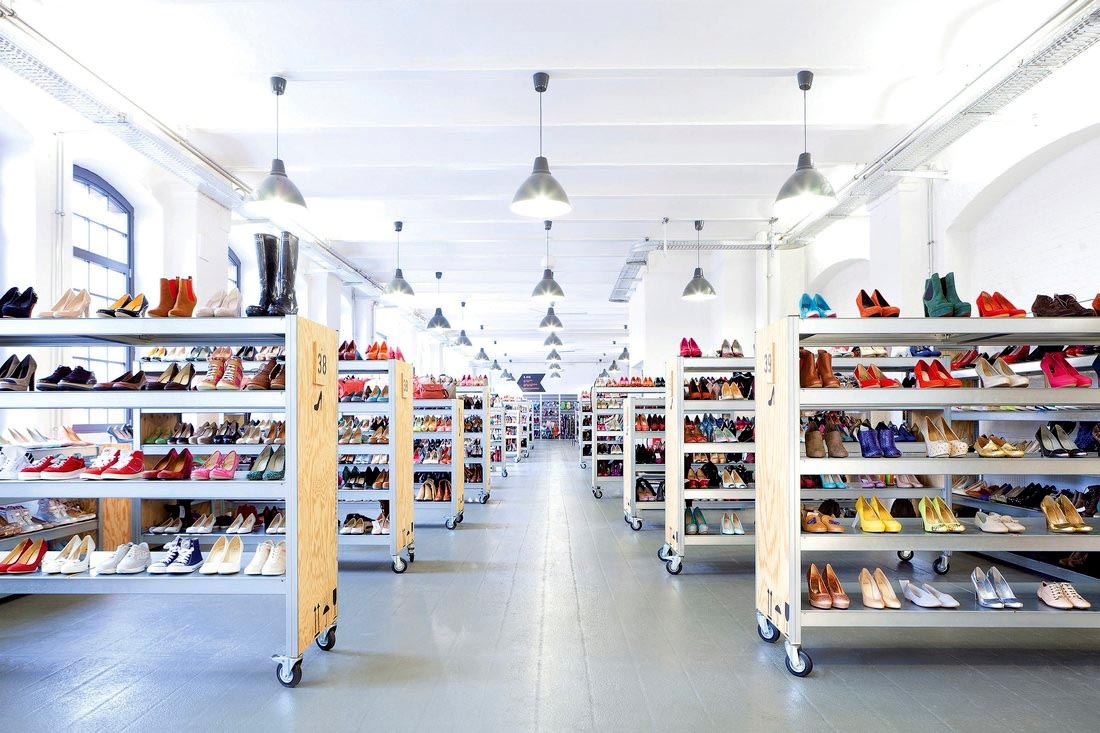
|
给时尚爱好者真正想要的东西 Zalando是欧洲最大的在线时尚零售商,该公司的产品设计副总裁安妮·帕斯夸尔将公司比作时尚界的Spotify,其任务是帮助消费者找到最适合自己的时尚风格——就像在音乐应用Spotify上找歌一样。Zalando在15个国家有2000多个品牌在售,另外它也推出了非常好用的移动应用。如果你网购的衣服不舍身,还可以通过Zalando的快递服务迅速退货。 飞利浦 做医学技术领域的设计先锋 对于设计的重要性,很多公司都是后知后觉,然而现年已经126岁的飞利浦公司早在1925年就意识到了设计的重要。当时,飞利浦聘请了建筑师路易斯·卡尔夫作为公司的首位专业设计师。卡尔夫不仅给公司的广告提供了标准化的外观,而且还贡献了一些经久不衰的设计,比如人人都用过的飞利浦剃须刀。现在的飞利浦设计部门是一个独立的部门,在9个国家的19间工作室里拥有超过500名设计师。 在首席设计官肖恩·卡尼的带领下,飞利浦设计部定期与各大医院和研究实验室合作,对各类医疗技术进行重新设计。该公司近年的较大突破有Azurion引导治疗平台等,该平台可以通过实时成像技术,指导临床医生进行比较复杂的手术。此外还有按需的3D打印手术工具等。 本文的另一版本载于2018年1月1日刊的《财富》杂志上。 译者:贾政景 |
Giving fashionistas exactly what they want Europe’s biggest online fashion retailer fancies itself as the Spotify of fashion, says Anne Pascual, VP of product design for the Berlin company—helping consumers discover styles much as they find new songs. So Zalando, which sells over 2,000 brands in 15 countries, has developed user-friendly apps for browsing looks. If the fit isn’t right, Zalando has a courier service to pick up your returns. —E.F. Philips Staying design-forward in medical tech While many companies are only just warming up to the potential for design to transform business, Philips recognized it as far back as 1925. That’s when the now 126-year-old Dutch appliance manufacturer hired architect Louis Kalff as the company’s first in-house designer. Kalff not only gave the company’s ads a standardized look but also produced enduring designs such as the Philishave razor. Today, Philips Design functions as an independent unit with over 500 designers in 19 studios across nine countries. Led by chief design officer Sean Carney, Philips Design regularly partners with hospitals and research labs to reconceive medical technology. Breakthroughs include the Azurion guided therapy platform, which allows clinicians to perform complex procedures with real-time imaging, and on-demand 3D printing of surgical tools. —D.Y. A version of this article appears in the Jan. 1, 2018 issue of Fortune. |













